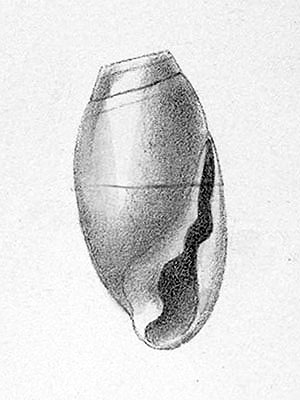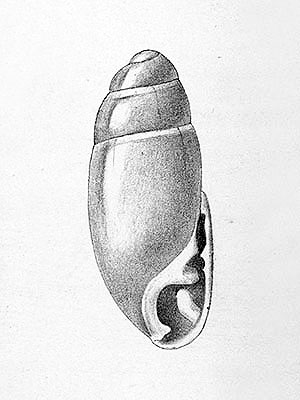Ribeira de Joao Gomes Amphorella Snail (Amphorella leacociana)
The Ribeira de Joao Gomes Amphorella Snail was described in 1852; it is known only from a few regions on the island of Madeira, Portugal, where it was found “under stones, very rare“. [1]
The shells reach sizes of about 3.7 in height; they were described as follows.:
“The shell is very small, oblong-turrite, widest near the base, very thin and fragile, subtransparent, yellowish-corneous, glossy, with a very narrow gray subsutural margin edged below with a light line. The spire has slightly convex outlines and obtuse summit. Whorls 5 1/2 slowly widening to the last which descends more rapidly. The aperture is small, piriform, very narrow above. Outer lip thin, strongly arched forward in the middle, deeply excised or retracted to the suture above. Columella rather wide, projecting into the aperture, truncate at base.” [1]
***
syn. Achatina leacociana Lowe, Ferussacia leacociana (Lowe)
***
This species can also be found named as Amphorella leacockiana (Lowe), which, of course, is wrong.
*********************

(public domain)
*********************
References:
[1] George W. Tryon; Henry A. Pilsbry; a.o.: Manual of Conchology. Second series: Pulmonata. Volume 19. Oleacinidae, Ferussacidae 1907-1908
*********************
edited: 15.02.2024


